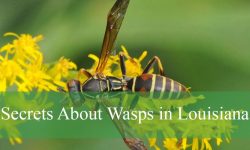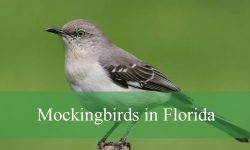Ohio’s diverse landscapes, from sprawling farmland to scattered woodlands, provide a unique habitat for a variety of wildlife. Among these, the Ring-necked Pheasant (Phasianus colchicus) holds a special place. Known for their striking appearance and elusive behavior, wild pheasants attract birdwatchers, hunters, and nature enthusiasts alike.
Though not native to North America, Ring-necked Pheasants have established localized populations in Ohio. They thrive in areas with the right combination of open fields, tall grasses, and agricultural lands. Understanding their characteristics, behavior, and preferred habitats can enhance the experience of observing them in the wild.
Observing wild pheasants in Ohio can be exciting yet challenging. Their colorful plumage and distinctive calls make them relatively easy to identify, but their wariness and preference for dense cover often keep them hidden. Early morning and late evening are prime times to see these birds as they forage or move between feeding grounds and roosting areas.
This guide explores wild pheasants in detail, covering identification, physical characteristics, behavior, feeding habits, reproduction, predators, habitat, and distribution across Ohio.
Ring-necked Pheasant: The Primary Wild Pheasant in Ohio

The Ring-necked Pheasant is the sole pheasant species with established wild populations in Ohio. Originally brought from Asia in the late 1800s for hunting, these birds adapted well to the agricultural landscapes of the Midwest.
Their populations in Ohio are mostly localized, with the highest densities in the northwestern and western counties. Farmers, hunters, and conservationists help maintain suitable habitats, which are essential for survival, especially since populations fluctuate depending on weather and land use practices.
Males, or roosters, are known for their vibrant plumage, including golden-brown feathers, iridescent green and blue necks, and the signature white neck ring. Females, or hens, have muted brown and tan feathers that blend into grasslands and fields. This contrast is especially noticeable during the breeding season when males display to attract females.
Physical Characteristics and Size
Adult male Ring-necked Pheasants typically measure 22 to 35 inches in length, including long tail feathers that can make up nearly half their total length. Females are smaller, around 20 to 25 inches, with shorter tails.
Males usually weigh 2.5 to 3.5 pounds, while females weigh 1.5 to 2.5 pounds. Their wingspans are approximately 24 to 30 inches for males and slightly smaller for females. Males’ size and colorful plumage make them highly visible in open areas, while females’ muted tones help them stay hidden while nesting or foraging.
Males have long, elegant tails and intricate feather patterns with gold, copper, and black markings. Their bright red wattles around the eyes and curved beak are also distinctive. Females have mottled brown plumage that provides camouflage, making them less noticeable to predators.
Behavior and Movement Patterns
Wild pheasants in Ohio are primarily ground-dwelling. They prefer moving through tall grasses, crop fields, and dense brush. They are most active during early morning and late evening, cooler times when they forage. During the day, pheasants seek cover to avoid predators and human activity.
Although mostly ground dwellers, pheasants are capable of short, rapid flights when startled. They often rise explosively from cover in a sudden burst of color and sound, surprising observers.
Outside the breeding season, pheasants are generally solitary or in small groups. During spring, males can be territorial, establishing display grounds or “leks” to attract females. At these leks, males fan their tails, puff up feathers, and make loud calls to demonstrate vigor and dominance. Observing this behavior provides insight into their social structure.
Feeding Habits and Diet
Pheasants are omnivorous, feeding on plants and small animals. In Ohio, their diet includes seeds, grains, berries, and insects. In spring and summer, insects like beetles, grasshoppers, and caterpillars provide protein, especially for chicks. In fall and winter, they rely more on seeds and grains left in harvested fields.
They forage primarily on the ground, scratching and pecking at soil and leaf litter. Pheasants may also feed in shallow wetlands or along streams, consuming aquatic plants and insects. Their feeding behavior not only sustains them but helps control insect populations and disperse seeds.
Predators and Threats
Wild pheasants face several predators in Ohio. Foxes, raccoons, bobcats, coyotes, and birds of prey such as hawks and owls are common threats. Eggs and chicks are especially vulnerable, with snakes and small mammals posing additional risks.
Human activity also affects populations. Habitat loss from agriculture, urban development, and land-use changes reduces food and cover. Hunting is popular in Ohio, but regulated seasons and wildlife management help maintain sustainable numbers. Conservation efforts, including grassland buffers and hedgerow preservation, support pheasant populations.
Reproduction and Nesting
Breeding usually begins in early spring. Males establish territories and display at leks to attract females. Once a female selects a mate, she builds a ground nest, often hidden in tall grasses, crop residues, or brushy areas.
Nests are shallow depressions lined with grasses and leaves for camouflage. A typical clutch contains 10 to 15 eggs, incubated for 23 to 28 days. Males guard the territory but do not incubate.
Chicks are precocial, moving and feeding shortly after hatching. They follow their mother closely, learning to forage for insects and seeds while staying alert for predators. By late summer, juveniles can fly short distances and begin to disperse from the nesting area.
Habitat Preferences
Wild pheasants thrive in agricultural lands, grasslands, wetlands, and scattered woodlands. They need dense cover for nesting and protection and open fields for foraging. Corn, soybean, and wheat fields provide both food and shelter. Roadside hedgerows, brushy fence lines, and wetlands offer refuge from predators.
Edge habitats, where cropland meets grassland or brush, are especially important. They provide a combination of food and cover in close proximity. Seasonal changes affect habitat use. In winter, pheasants move closer to crop residues and shelterbelts. Spring and summer bring more activity in open fields and grassy areas, particularly during the breeding season.
Distribution in Ohio
Ring-necked Pheasants are unevenly distributed. The northwestern and western counties have the highest densities, including Putnam, Van Wert, and Defiance. These areas feature a mix of farmland, grasslands, and conservation efforts.
Eastern and southern Ohio have fewer pheasants due to fragmented habitats, denser forests, and urbanization. Within suitable areas, pheasants are often near field edges, grass waterways, and small wetlands. Population density varies with habitat quality and management practices. Birdwatchers are advised to focus on agricultural landscapes with a history of wildlife management.
Best Times and Locations for Observation
The early morning and late afternoon are ideal times to see wild pheasants. Birds forage, preen, and interact during these periods. Midday is less productive as birds stay hidden in cover to avoid predators and heat.
Prime locations include edges of corn and soybean fields, roadside grass strips, and managed grasslands. Northwest Ohio counties are known for pheasant sightings due to open fields, hedgerows, and conservation programs. In winter, birds may gather near shelterbelts and crop stubble, though they may be more dispersed.
Conclusion
Wild pheasants in Ohio, specifically the Ring-necked Pheasant, are a striking component of the state’s wildlife. Their vivid plumage, complex behaviors, and reliance on agricultural and grassland habitats make them fascinating to observe.
Understanding their physical characteristics, feeding habits, reproductive behavior, and habitat preferences enhances the experience of seeing them in the wild. Though populations are concentrated in certain areas, knowledge of their habits and timing allows successful sightings. Ohio’s mixture of farmland, grasslands, and managed wildlife habitats ensures that encountering a wild pheasant is achievable and rewarding.
FAQs About Wild Pheasants in Ohio
What species of wild pheasants are found in Ohio?
The only established wild pheasant species in Ohio is the Ring-necked Pheasant (Phasianus colchicus). This bird was introduced from Asia for hunting purposes and now thrives in suitable farmland and grassland habitats. Other pheasant species, like Golden or Silver Pheasants, are not found in the wild in Ohio.
How can I identify a wild pheasant in Ohio?
Male Ring-necked Pheasants have vibrant plumage, including a golden-brown body, iridescent green and blue neck, and a distinctive white ring around the neck. Females are mottled brown and tan, providing excellent camouflage. Males are larger with long tails, while females are smaller and less conspicuous.
When is the best time to see wild pheasants in Ohio?
Early morning and late afternoon are the most productive times to observe pheasants. During these hours, they emerge from cover to forage, interact, and display behaviors that are otherwise hidden during midday.
Where are wild pheasants most commonly found in Ohio?
Wild pheasants are most concentrated in northwestern and western Ohio, in counties such as Putnam, Van Wert, and Defiance. They prefer agricultural landscapes with field edges, hedgerows, wetlands, and grasslands that provide both food and cover.
What do wild pheasants in Ohio eat?
Pheasants are omnivorous, feeding on seeds, grains, berries, and insects. In spring and summer, insects are an important protein source for chicks, while in fall and winter, seeds and leftover grains in crop fields make up the majority of their diet.
How do wild pheasants reproduce in Ohio?
Males establish territories and display at leks in early spring to attract females. Females build nests on the ground in dense cover, laying 10 to 15 eggs. Chicks are precocial and follow the mother shortly after hatching, learning to forage and avoid predators.
What predators threaten wild pheasants in Ohio?
Common predators include foxes, raccoons, bobcats, coyotes, and birds of prey. Eggs and chicks are particularly vulnerable, while adults rely on camouflage, alertness, and rapid flight to evade threats. Human activities and habitat loss also impact populations.






